Situated among the mighty Garhwal Himalayan ranges of Devbhoomi, Uttarakhand, this Lord Shiva temple is the highest Lord Shiva temple in the world. Literally meaning ‘lord of the peaks’, this sacred temple sits on top of a ridge that divides the holy rivers Alaknanda and Mandakini, attracting a number of pilgrims from all across the globe. Not only is this temple a part of the Panch Kedar Yatra, but it is also a crucial and the highest Jyotirlinga among the other 12 that dot the entire subcontinent. Believed to be 5,000 years old, this Shiva temple worships the hands of the Lord and is the second most significant temple, right after Kedarnath Dham. This temple is the perfect blend of natural beauty and immense spirituality, making your trip here worth it.
History & Legend
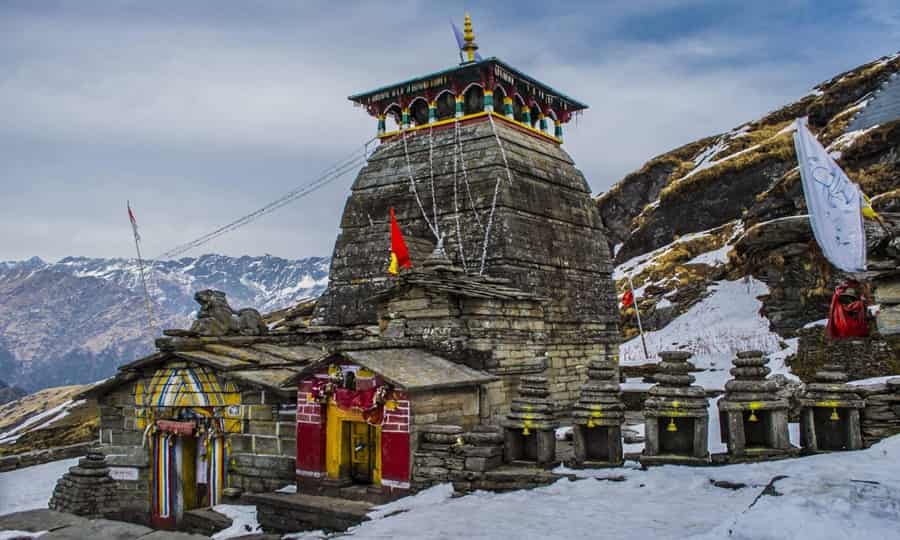 The Tungnath temple has a rich history and mythological legends linked to it. Lord Rama is said to have meditated at Chandrashila, a mountain peak close to Tungnath. Ravana, himself a Brahmin and a devotee of Lord Shiva, meditated in these mountain ranges. The Pandavas came here seeking Lord Shiva to pray for his forgiveness for having killed their cousins in the war. Lord Shiva, however, avoided them and assumed the form of a bull, hiding underground at Guptkashi, where the Pandavas pursued him. Shiva decided to dematerialize his form and scattered the bull in five different locations that are today known as the Panch Kedars. The hump fell at Kedarnath, the head at Rudranath, the hands at Tungnath, the hair at Kalpeshwar, and his midsection at Madhyamaheshwar. Lost to humanity since it was situated so high and in such a remote location, it was discovered by Adi Shankaracharya during his travels.
The Tungnath temple has a rich history and mythological legends linked to it. Lord Rama is said to have meditated at Chandrashila, a mountain peak close to Tungnath. Ravana, himself a Brahmin and a devotee of Lord Shiva, meditated in these mountain ranges. The Pandavas came here seeking Lord Shiva to pray for his forgiveness for having killed their cousins in the war. Lord Shiva, however, avoided them and assumed the form of a bull, hiding underground at Guptkashi, where the Pandavas pursued him. Shiva decided to dematerialize his form and scattered the bull in five different locations that are today known as the Panch Kedars. The hump fell at Kedarnath, the head at Rudranath, the hands at Tungnath, the hair at Kalpeshwar, and his midsection at Madhyamaheshwar. Lost to humanity since it was situated so high and in such a remote location, it was discovered by Adi Shankaracharya during his travels.
Architecture
The fame and reputation of the Tungnath temple may lead one to believe it is a large structure. It comes as a surprise when visitors arrive at this place to find a small stone structure surrounded by other small shrines dedicated to various gods. It is said Arjuna constructed the temple, with the lingam representing the arms of the Lord, accommodated in the Garbha Griha or sanctum. The temple is constructed in the typical North Indian Hindu architectural style.
Why Visit Tungnath
The trek to this Lord Shiva temple is extremely easy to cover. It can be completed by covering a distance of 4 km, which starts from Chopta. However, during the winter season, this area experiences heavy snowfall that covers the entire region in a thick blanket of snow, making the temple difficult to access. While trekking your way up to the temple, you will witness some of the most breathtaking views and vistas, consisting of lush green meadows, thick rhododendron coverings, and rocky terrains—all against the grand and majestic backdrop of the mighty Himalayan ranges. On a clear-sky day, you will be able to view the snow-clad mountains that embrace the entire valley.
Importance
As stated above, Tungnath is the place where it is believed the hands of Lord Shiva manifested themselves. It ranks second in importance after Kedarnath as a place of pilgrimage. As the highest Lord Shiva temple in the world, Tungnath gives you yet another reason to visit during your Char Dham Yatra or when you visit Uttarakhand.
Worship at the Temple
A priest from the Maku village officiates over ceremonies. The temple is located so high that access is difficult or impossible in the rains and winter, so it remains open only from April to October. The best time to visit is before the rains start, as pilgrims may unexpectedly encounter landslides that make travel hazardous. An alternative is September-October, but it can be chilly at this time of the year. To reach the temple, you can arrive in Chopta from where you have to cover the 4 km distance on foot, a journey of about 3 to 4 hours. The arati here is a feast for the soul.
Activities near Tungnath:
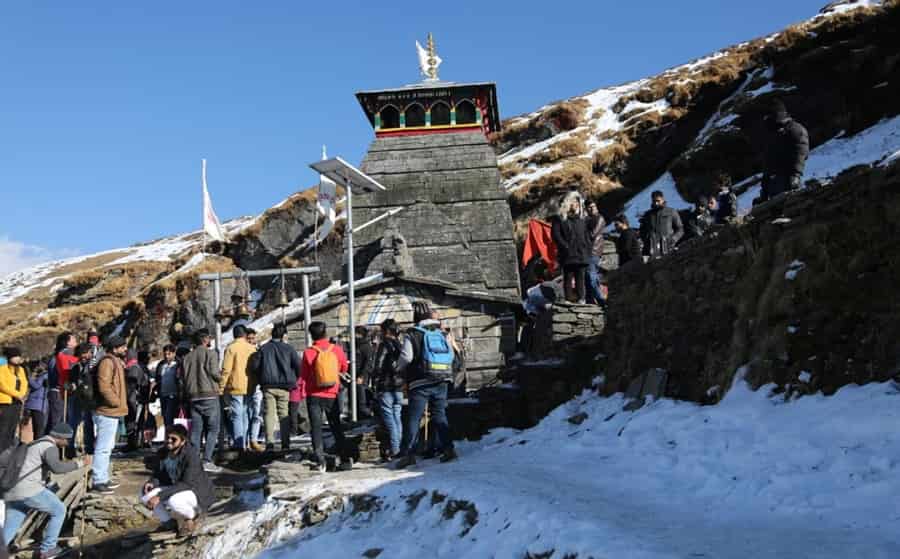
Visit Tungnath Temple
Dating back to almost 1,000 years and perched at an altitude of 3,680 meters above sea level, this temple is popular for being the highest temple dedicated to Lord Shiva. This temple is a crucial part of the holy Panch Kedar Yatra circuit, which was established by the Pandava brothers as a way of asking for forgiveness for killing their kin in the Battle of Mahabharata. A visit to this place is a must, as it offers picturesque views of the surroundings.
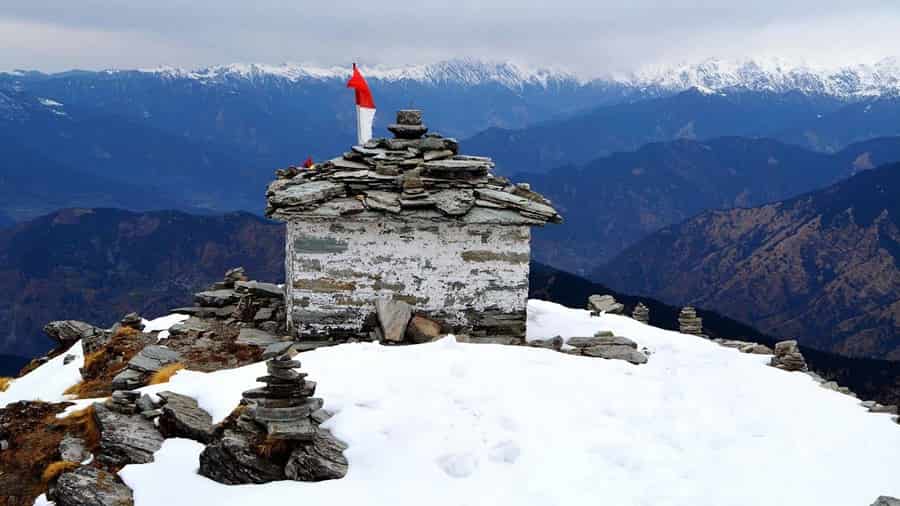
Trek to Chandrashila
This iconic trekking destination in Chopta is situated at an easy trekking distance from the temple. After trekking for 1.5 km, you will reach Chandrashila, which has no dearth of natural beauty. The entire trekking path is marked, as there are no proper paths leading up to the destination. This place holds significant importance in the lives of devout Hindus since it is believed that Lord Rama meditated on top of this peak to ask for forgiveness for causing Brahmahatya (the killing of Ravana, a Brahmin).
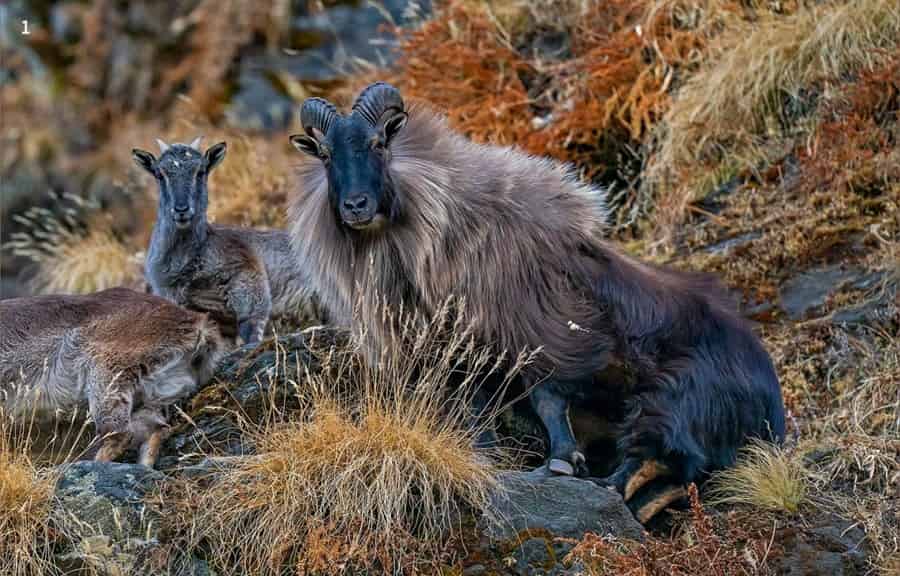
Kanchula Korak Musk Deer Sanctuary
Spanning an area of 5 sq. km., this musk deer sanctuary is a complete and wholesome paradise for nature lovers and adventure enthusiasts. As the name suggests, this place offers a peaceful home for musk deer, among other Himalayan wildlife creatures. The area is covered in a thick green forest, and the entire environment is filled with the mesmerizing aroma of different aromatic plants. This sanctuary is located 7 km from the main Tungnath temple on the Chopta-Gopeshwar road.
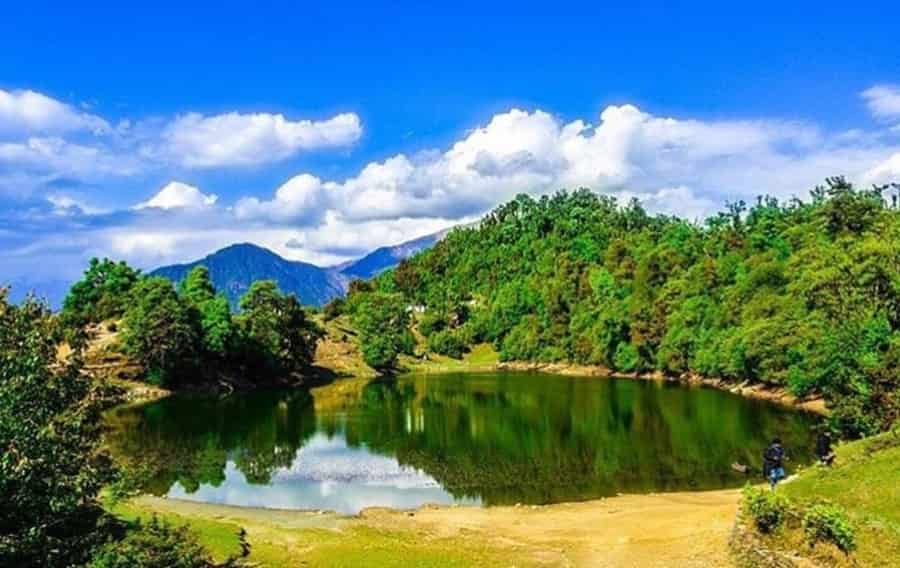
Visit Deoria Tal
If you are looking for an opportunity to explore the wild side, then a trekking and camping expedition to Deoria Tal will be your best option. This small, pristine, and calming lake is perched at an altitude of 2,387 meters above sea level. It is situated 3 km from the villages of Sari and Mastura, two of the most breathtaking and charming villages in Uttarakhand, known for their natural beauty and serenity. Camping near this lake will allow you to savor some enthralling views of the surrounding snow-laden mountain tops.
Nearby Places to Visit
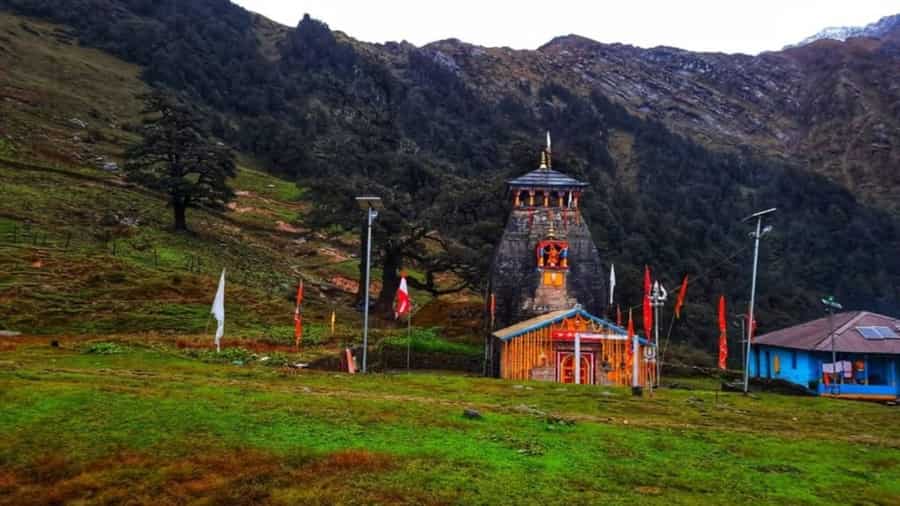
Madhyamaheshwar
This temple is located at a height of 3,289 meters above sea level and is dedicated to Lord Shiva. The almighty Lord is worshipped in the form of a navel lingam, and this temple offers mesmerizing views of the gorgeous surroundings of the impressive Himalayan valleys. This place is not only visited by religious pilgrims, but people interested in outdoor activities like nature walks and trekking also pay a visit here regularly.
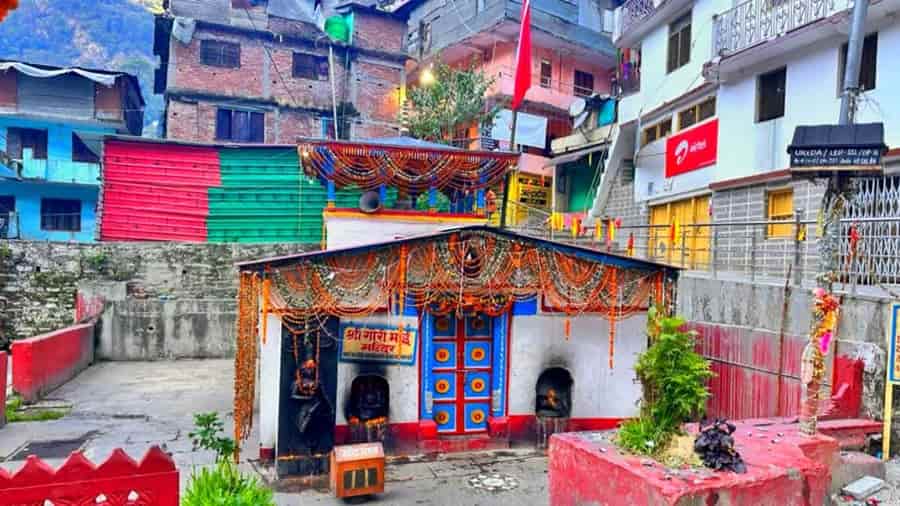
Gaurikund
This place is a popular Hindu pilgrimage site and serves as the base camp for the trek to the Kedarnath temple. It is located at an elevation of 6,502 meters above sea level. According to Hindu legend, Lord Shiva’s consort Parvati is said to have performed intense penance here to win Lord Shiva’s love and affection. This is the place where the Lord accepted and confessed his love for her before they were finally married at the holy site of Triyuginarayan. Gaurikund is also home to a thermal spring, which is believed to cure mental and physical ailments.
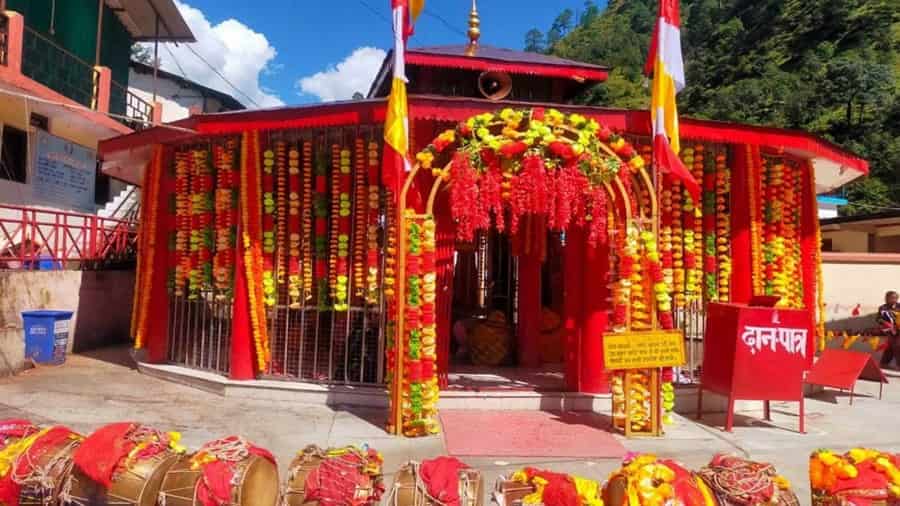
Kalimath
Located at a height of 6,000 meters above sea level, this place is an important Shakti Peetha out of the 108 Shakti Peeths spread across India. Surrounded by the massive peaks of Kedarnath in the holy district of Rudraprayag, Kalimath is situated close to the winter abode of the presiding deity of Kedarnath, Ukhimath. As the name suggests, the temple here is dedicated to Goddess Kali and is visited by many pilgrims during the auspicious occasion of Navratri.

Gopeshwar
Located near the district of Chamoli, Gopeshwar is a charming and picturesque hamlet situated on the lap of the mighty Himalayas. Gopeshwar is not only a beautiful destination for religious individuals and adventure seekers alike, but it also functions as the administrative headquarters for the holy district of Chamoli. Some popular attractions here include the ancient Lord Shiva temple, Vaitarni Kund, Rudranath, and Saggar, among others.
Best Time to Visit
Winter (November to March): During December, January, and February, Tungnath receives extremely heavy snowfall, and the entire area remains covered in a thick white layer of snow, making access to the temple difficult. The temperature varies from 9 to 25 degrees Celsius, and in some cases, it may even dip below freezing.
Summer (April to June): Summer is the ideal time to visit this holy shrine. With temperatures ranging from 17 to 27 degrees Celsius, the entire region is flocked by pilgrims and devotees. The snow melts, opening up the access routes. The surrounding greenery also comes to life during this time.
Monsoon (September to October): The monsoon season experiences minimal rainfall. This is also a good time to visit Tungnath for sightseeing, as the skies clear up. If you’re looking to spend some quality time in nature and experience unparalleled serenity, visiting during the monsoon will be worth it. However, be cautious as the hilly areas remain prone to unexpected landslides.
Getting There
By Air: The closest airport is located in Dehradun, at Jolly Grant, which is 41 km from Haridwar. Upon arrival at Haridwar, you will need to take a road journey as there are no other means to reach Tungnath. The distance from Haridwar to Chopta is 225 km.
By Rail: The closest railway station to Tungnath is in Haridwar, which is well connected to all major cities in India. Once you arrive in Haridwar, your journey will continue by road. Chopta is 225 km from Haridwar.
By Road: Vehicles can reach up to Chopta, from where you will need to cover a 3.5 km trek. The following route map is from Delhi:
Delhi → Haridwar → Rishikesh → Devprayag → Srinagar → Rudraprayag → Augustmuni → Syalsaur → Kund → Ukhimath → Duggalbitta → Baniyakund → Chopta → Tungnath → Chandrashila.
Festivals at Tungnath
Tungnath temple celebrates festivals such as Basant Panchami, Dussehra, and Diwali with immense pomp and show. The Brahmin of the temple, who performs the puja rituals, is a local from the village of Maku. Unlike other temples of Kedar, where the priests come from South India, a tradition brought by the Hindu sage Adi Shankaracharya, Tungnath’s priest is from the Khasi Brahmin community.
Opening and Closing Dates
The temple is open daily from 6 am to 7 pm. During the winter season, the temple closes for Darshan, and the symbolic image of the presiding deity, along with the priest, is moved to Mukunath, located 19 km away. Mukunath is close to Duggalbitta, which is 10 km before Chopta, on the way to Ukhimath.
Accommodation Facilities
If you wish to stay the night at Tungnath, you have options based on your budget. There are three verified hotels in Tungnath, and budget-friendly rooms that are clean and affordable. In addition, you can opt for staying in Chopta, which has several accommodation options, though do not expect luxury resorts. Camping is also an option, as campsites are available on the way to Ukhimath.

 Call
Call WhatsApp
WhatsApp Enquiry
Enquiry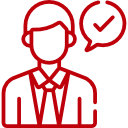




Leave a Reply